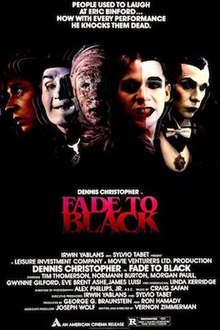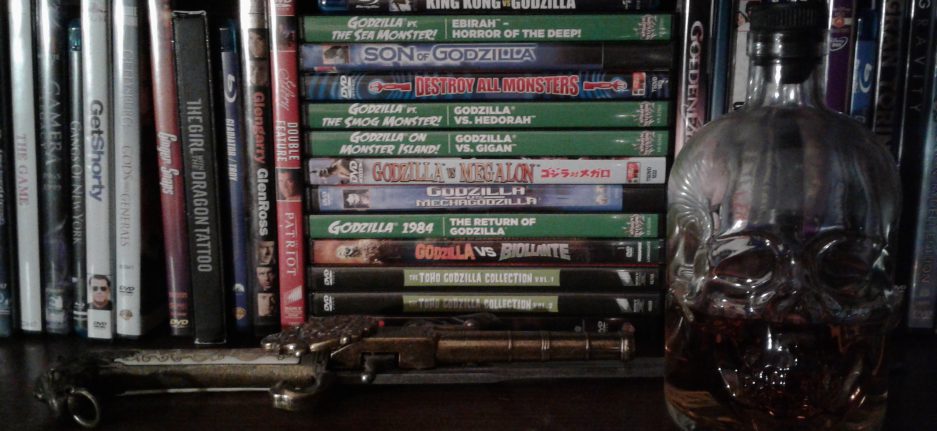We begin our second week by dipping back into the earlier parts of the early-80s slasher boom scene with 1980’s Fade to Black. Much like The Funhouse, though, there’s more to this flick than just a simple slasher.

The plot revolves around young Eric Binford. Working at a film distributor, Eric lives a pretty dismal life, constantly barked at by his salty co-workers and abusive (and arguably very skeevy) wheelchair-bound aunt and unable to really relate to other people. He tends toward the obsessive when it comes to classic films, from which he derives a good amount of escape, be it in the theatre or projected on the wall of his darkened room. One day, whilst lunching at a diner, he runs across Marilyn, an aspiring model from Australia who, oddly enough, resembles Marilyn Monroe. Eric’s instantly smitten, and even manages to finagle a date with Marilyn; things begin to go sideways for him, though, when she unintentionally stands him up (which also leads him to be turned down by a hooker). Back at home, his aunt rails at him again and breaks his projector. The snapping has commenced, ushered in with a bit of homicide via wheelchair down the stairs. From here on out, Eric’s hold on reality is tenuous at the best of times, and he acts out various movie roles – going so far as to paint his face to make it look like a monochrome image – as he goes on something of a killing spree. Meanwhile, a criminal psychologist, with the help of a policewoman, is trying to track Eric down before the rest of the police force, led by a belligerent captain, gets to him first.
Like I said, there’s more to this than just a straightforward slasher. We get a decent glimpse inside Eric’s dark mind for a good while before the tits go up, and his peculiar methodology is entirely understandable, given his home life and habits. It’s clear writer/director Vernon Zimmerman (who would go on to pen the gloriously inane Teen Witch almost a decade later) has something to say about the impact of so much violent media on a generation of media-hungry youths, but, admittedly, that something is rather obvious and kinda shallow, namely that violence in media begets violence in life when one becomes unhinged.
Dennis Christopher is mostly solid as Eric, definitely getting the creepy loner vibe down, but his impressions of classic film actors are pretty off, particularly his Lugosi and Cagney (though that may actually have been the point, his poor impressions being manifestations of his delusional psychosis or something, I dunno). If nothing else, though, he is enjoyable here. Playing somewhat against type is Tim Thomerson as the psychologist: better known as a crag-jawed tough guy in flicks like the Trancers and Dollman series, he’s surprisingly entertaining as a more touchy-feely type (of course, he did start out as a stand-up comic, so maybe it’s not so much of a stretch). And the keen-eyed will be able to spot a very young Mickey Rourke in only his second film role as one of the co-workers who bullies Eric until he gets his just comeuppance.
Though much of the film resembles a multitude of cheap slashers of the era, including the slightly rough-looking cinematography and the ample use of hand-held cameras (not really for effect, mind you), the richer characters and underlying message elevate it slightly above the rest of the rabble. Give it a go for a fun, dark flick dripping in cinematic references.

One thought on “Nightmare Fuel 2018: Day 8 – Fade to Black”